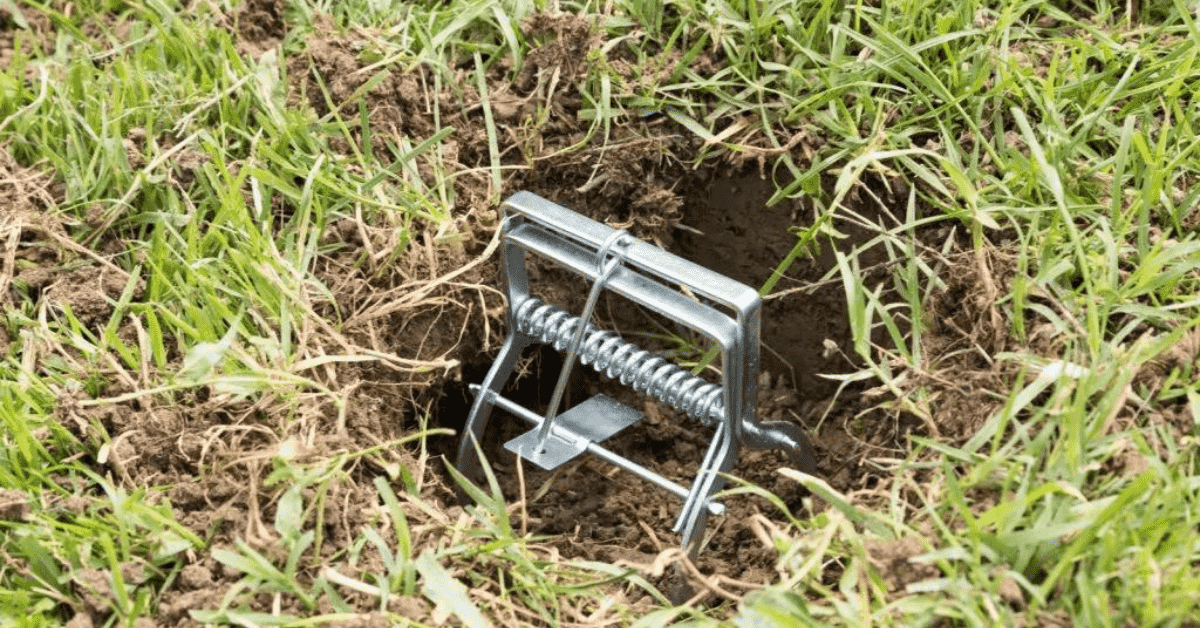Table of Contents
Are you tired of those pesky moles wreaking havoc on your perfectly manicured lawn? Take control of the situation with the highly effective solution – mole traps! This comprehensive guide will equip you with the knowledge and tools to effectively use mole traps, empowering you to reclaim your turf and bid farewell to those underground troublemakers. Let’s dive in and restore peace to your yard!
Types of Mole Traps
The correct type of mole trap is crucial when dealing with pesky moles invading your lawn. Various mole traps are available on the market, each designed for different methods of capturing these underground pests. Understanding mole behavior, such as their preference for specific soil types and their tendency to create complex tunnel systems, can help you choose the most effective trap.
- Scissor-Jaw Trap: One common type is the scissor-jaw trap, which is placed in the mole’s tunnel and triggered when the mole passes through, effectively trapping it. Another popular option is the harpoon trap, which impales the mole as it moves through its tunnels.
- Live-Capture Traps: For those looking for a more humane approach, live-capture traps safely catch moles without harming them. Sonic repellents and deterrents are also gaining popularity. They emit vibrations that disrupt moles’ sensitive hearing and drive them away from your yard.
Before choosing a mole trap, consider factors such as your lawn size, soil type, and severity of infestation to determine which type will be most effective in ridding your garden of these unwanted guests.
Choosing the Right Location for Your Trap
One crucial step in effectively using mole traps is choosing the correct location. Mole activity can typically be identified by raised tunnels and mounds of soil in your lawn. Place the trap near these signs of activity to increase your chances of success.
- Look for surface runways created by moles as they travel just below the surface. These runways usually follow a straight path and are ideal spots to set up your trap.
- Avoid placing the trap directly on top of a tunnel but relatively adjacent to it, as this increases the likelihood of catching a mole.
- When selecting a location for your trap, consider the safety of pets and children, so choose an area less frequented in your yard.
- Rest assured, the ground should be firm enough to hold the trap securely in place without any movement that could trigger prematurely catching other animals or causing harm.
By carefully selecting where you place your mole trap, you’ll maximize its effectiveness and increase your chances of successfully ridding your lawn of these pesky pests.
Setting Up the Trap
When it comes to setting up your mole trap, precision is critical. Begin by identifying active tunnels in your lawn – these are the common pathways moles use to travel underground. Gently press down on the tunnel to check for any new activity.
- Once you’ve located an active tunnel, carefully dig a small hole to fit the trap inside. The hole should be deep enough to accommodate the trap and wide enough to remove the trapped mole easily.
- Ensure the trigger mechanism faces upwards and the trap sits level with the ground. This will ensure a seamless capture once triggered.
- Secure the trap and cover it with soil or grass clippings to disguise its presence from curious critters or pets. Avoid disturbing the area too much, as moles are sensitive to environmental changes.
- Patience and persistence are essential when setting up your trap; give moles time to become accustomed to the newly placed object in their territory before expecting results. Remember, successful trapping takes practice and unwavering commitment!
Baiting the Trap
When effectively using mole traps, baiting plays a crucial role in attracting these pesky pests.
- Choose baits appealing to moles, such as earthworms, grubs, or mealworms. These natural food sources will entice the moles into the trap.
- Place the bait strategically inside the trap according to its design. Ensure it is securely fastened and won’t easily fall out once the trap is triggered.
- Refrain from using your hands to handle the bait.. Moles have a keen sense of smell and may be deterred by human scent. Use gloves when setting up the trap and placing the bait.
- Check your traps regularly to see if any moles have been caught. Replace the bait as needed to keep it fresh and enticing for new potential captures.
Following these steps to bait your mole trap increases your chances of successfully ridding your lawn of these unwanted underground visitors.
Checking and Removing Caught Moles
Once you’ve set up your mole trap, you must check it regularly for moles. Check the traps at least once daily to remove any captured moles promptly. Signs of a successful capture include:
- It’s a triggered trap.
- Disturbed soil around the trap.
- The presence of a mole inside the trap.
When checking the trap, approach it cautiously and wear gloves to handle the trapped mole safely. If you find a mole in the trap, follow proper disposal guidelines according to local regulations. This may include using a shovel or tongs to remove the mole from the trap and placing it in a secure container for disposal.
Dispose of the trapped mole in a designated area away from your property. This will help prevent any potential re-infestation or attracting other pests.Verify your local laws on appropriate disposal methods, including burying the mole or contacting a local pest control service for removal.
After removing the caught mole, reset the trap if necessary and monitor it closely in case more moles are causing damage to your lawn. Maintaining and resetting traps is critical to effectively controlling pesky mole populations on your property.
Tips for Preventing Future Mole Infestations
To prevent future mole infestations, consider planting natural deterrents like daffodils, marigolds, or alliums around your lawn. These plants emit scents that moles dislike, potentially deterring them from burrowing in those areas. Keep your lawn well-watered, as moles are less likely to dig in moist soil. However, it’s important to note that while these methods can be effective, they may not eliminate the risk of mole infestation.
Regularly mow your grass to maintain a shorter length; moles prefer tall grass for cover. Installing a barrier made of hardware cloth beneath flower beds can also help prevent moles from tunneling into those areas.
Avoid overwatering your lawn, as it can attract earthworms – a primary food source for moles. Regularly check your yard for any indications of mole activity, such as tunnels or mounds, and take action promptly if you suspect an infestation is starting.
By putting these precautionary steps into practice, the possibility of future mole invasions and keep your lawn free from pesky pests.
Other Natural Methods for Mole Control
While mole traps can effectively remove pesky moles in your lawn, you can also try some natural methods to control these underground pests.
One natural method is planting barrier plants around your garden, like daffodils, marigolds, or alliums. Moles dislike the smell of these plants and may avoid areas where they are grown.
Another approach is using castor oil-based repellents. These products create an unpleasant environment for moles by disrupting their food sources in the soil.
Maintaining a well-aerated lawn with healthy soil can deter moles, as they prefer compacted soil. Regularly aerating your lawn and keeping it well-watered can make it less attractive to these burrowing critters. In addition to mole prevention, these practices help enhance the look and the condition of your grass , making it less susceptible to other pests and diseases.
Introducing predators like owls, snakes, or domesticated animals such as cats or dogs that enjoy hunting small rodents could also help keep mole populations in check naturally.
Conclusion
Using mole traps can be an effective and humane way to rid your lawn of pesky pests. By choosing the right type of trap, selecting a suitable location, setting it up correctly, baiting it properly, and checking it regularly, you can significantly reduce the mole population in your yard. Remember to implement preventive measures and explore natural methods for long-term mole control. Patience and persistence allow you to enjoy a beautiful lawn free from unwanted moles.





